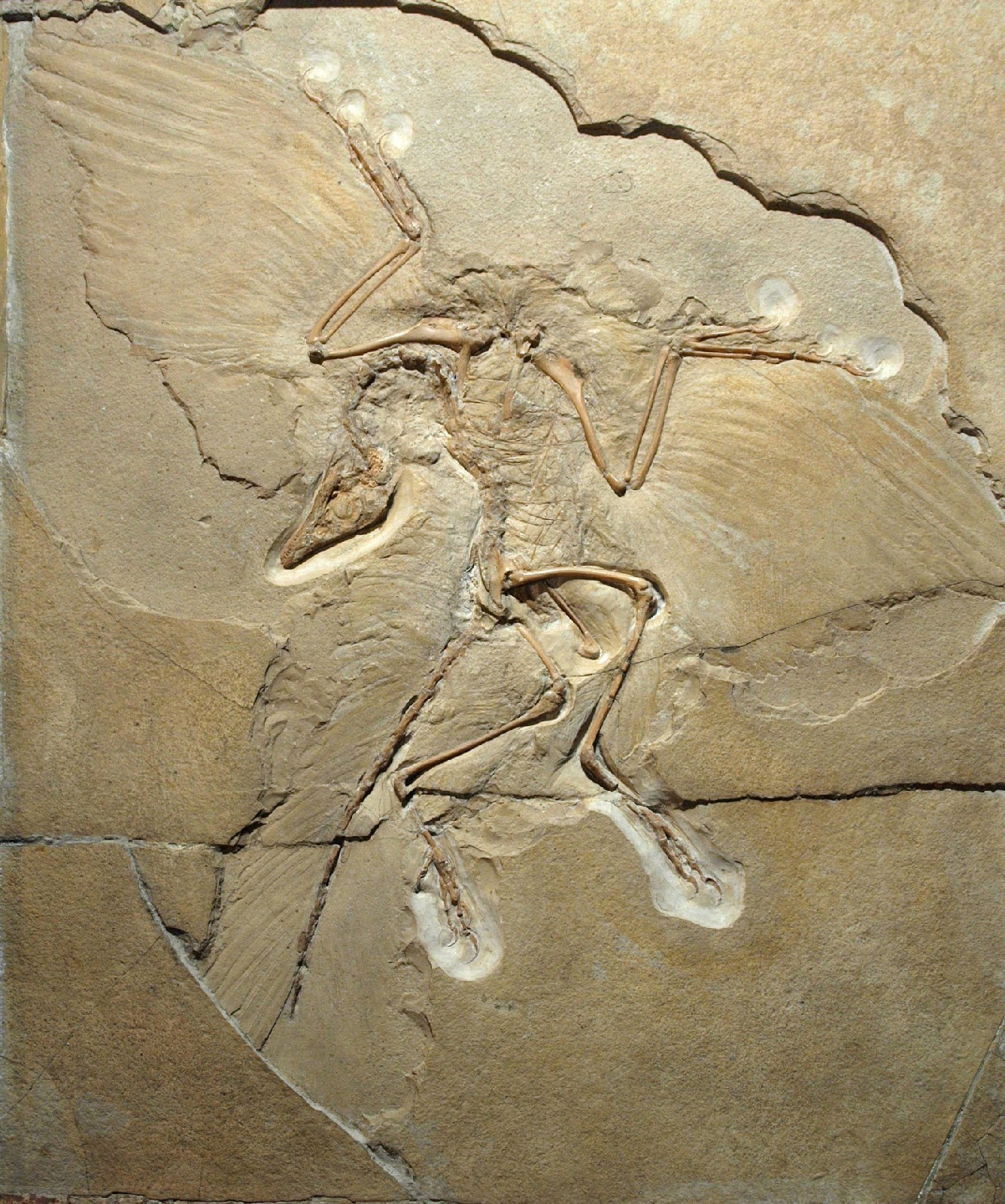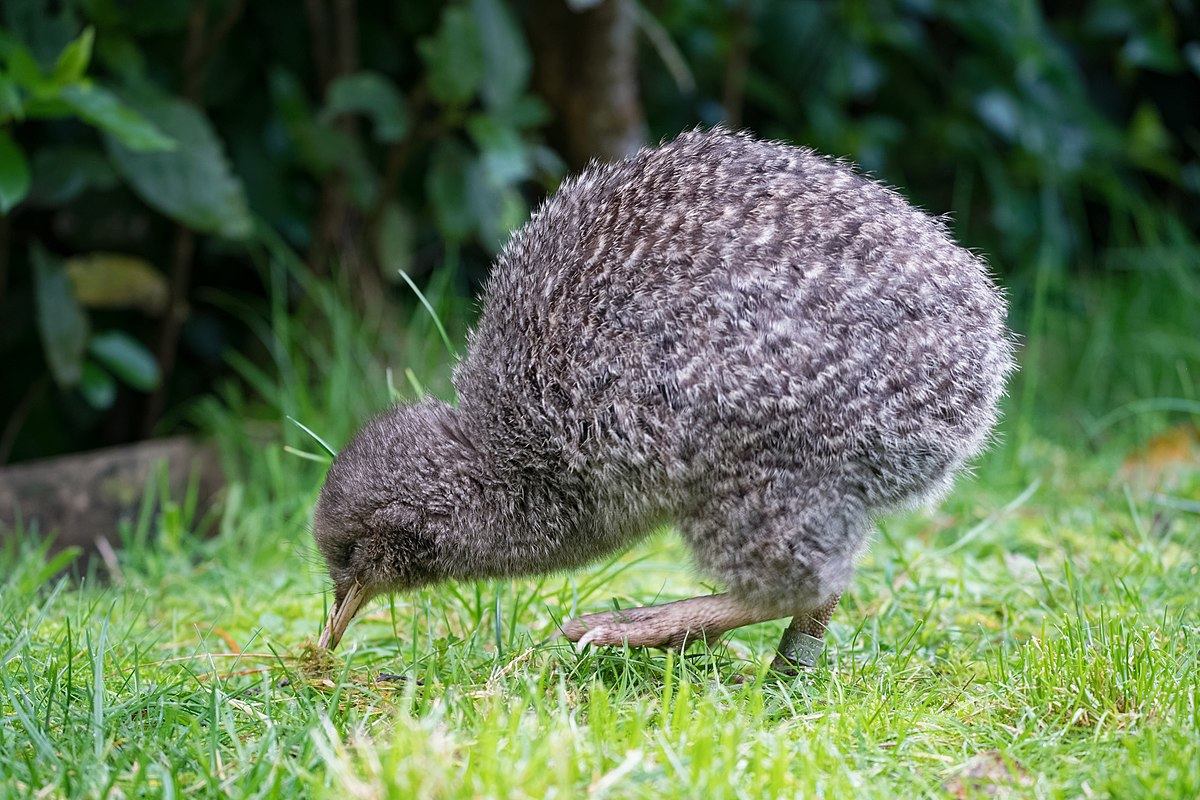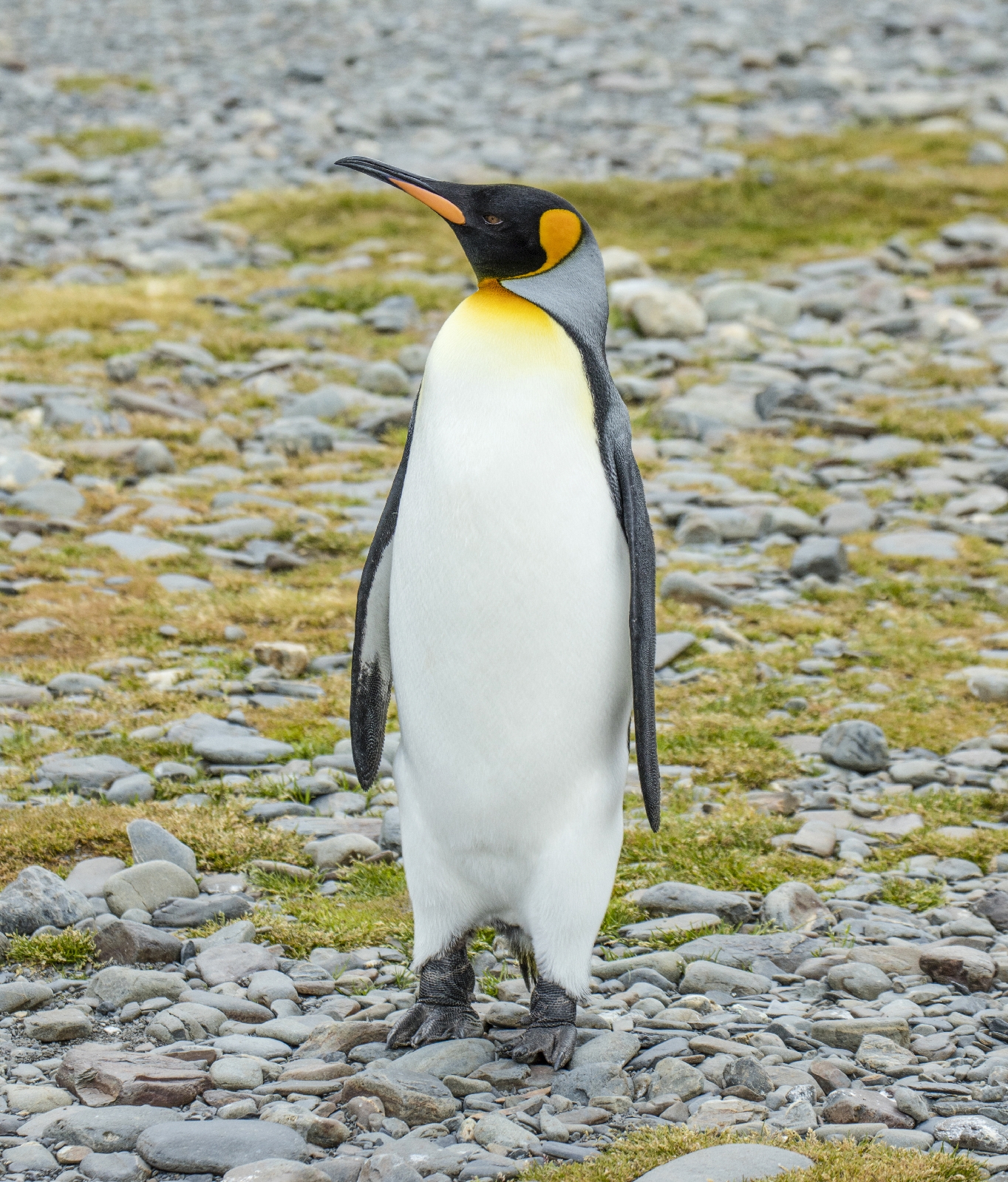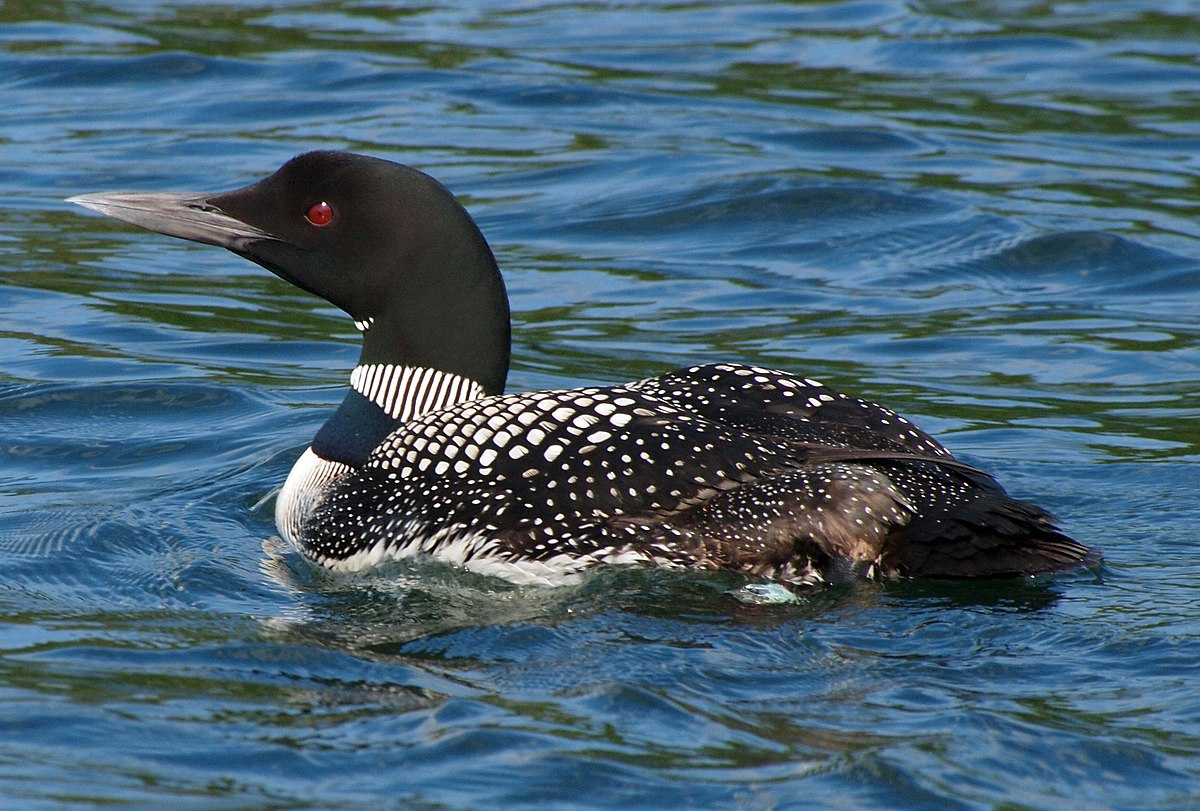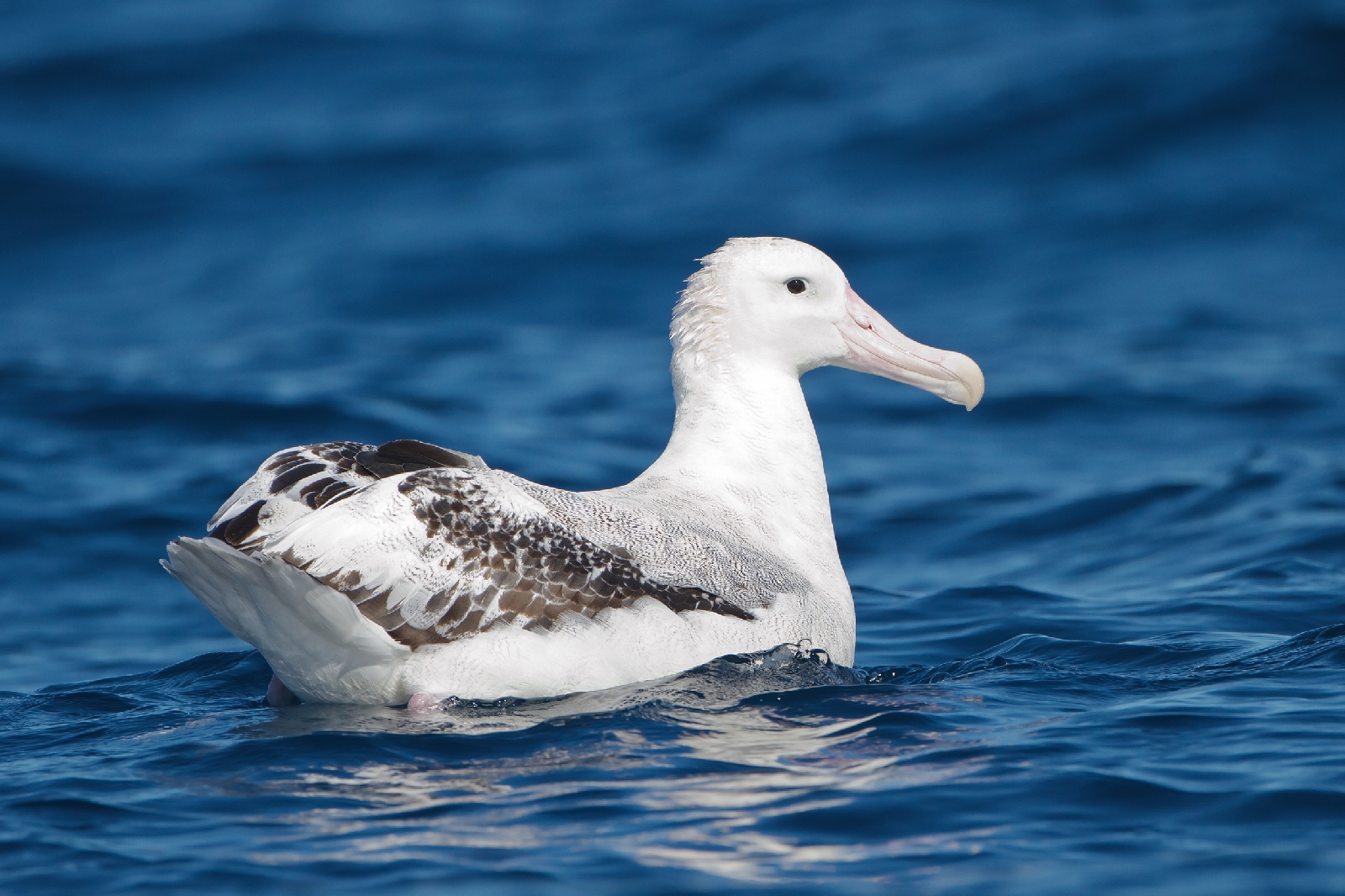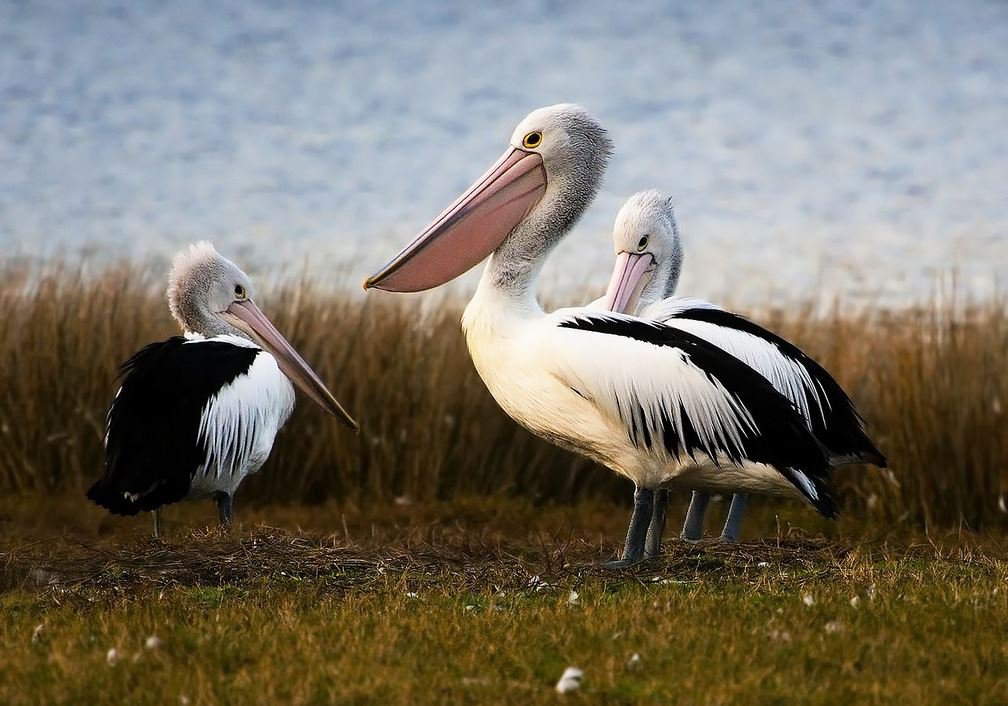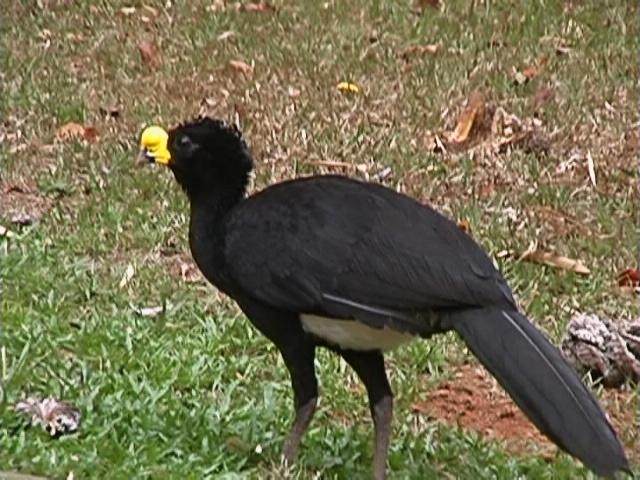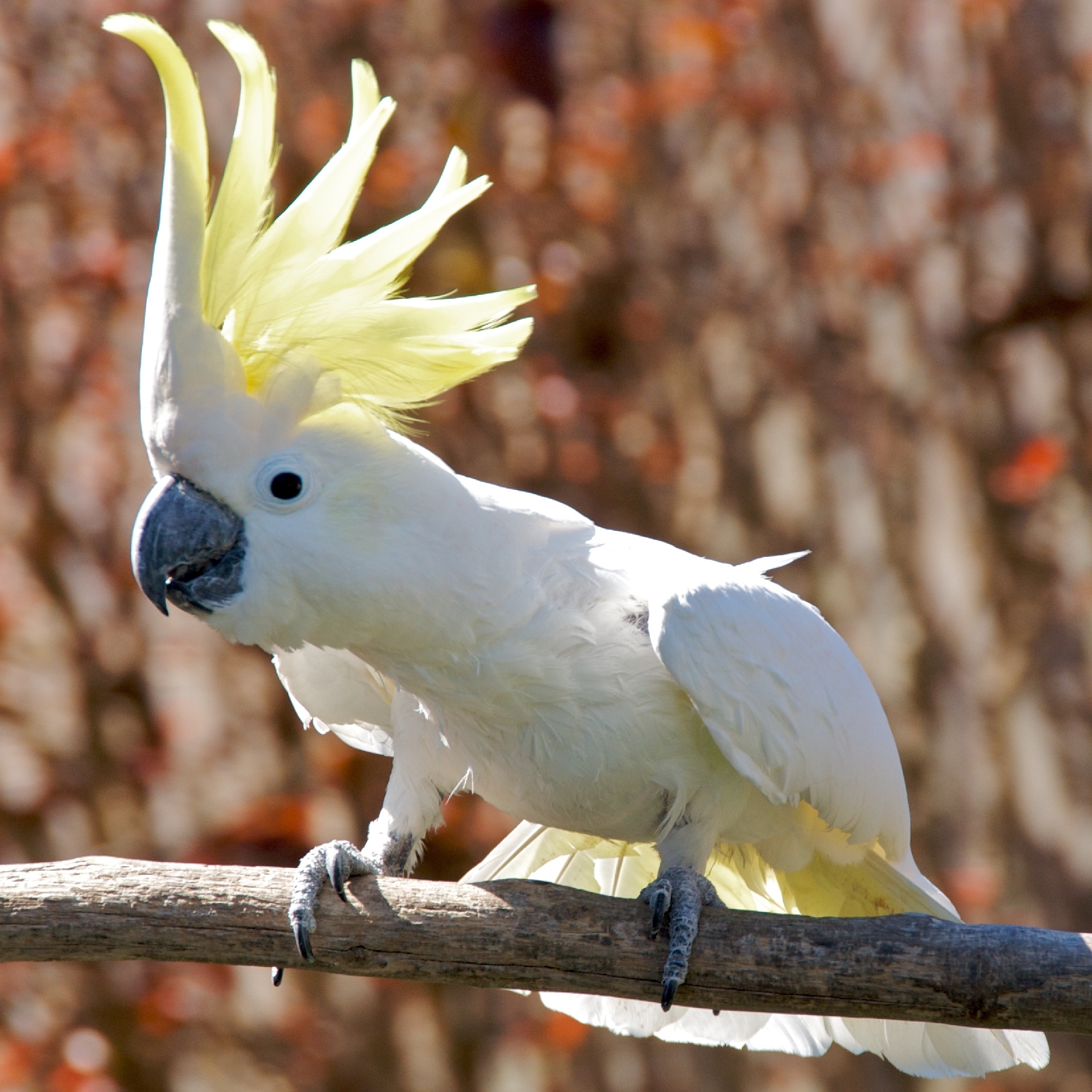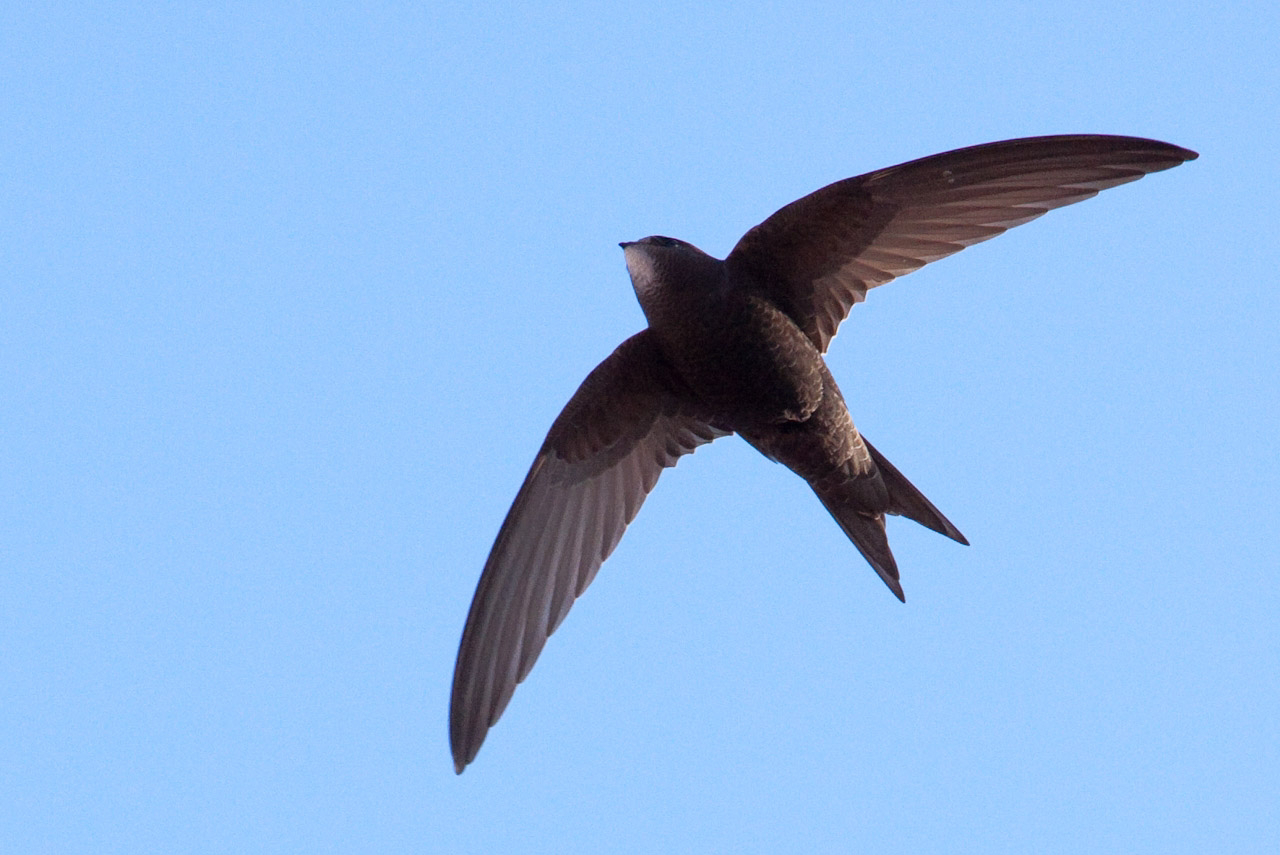Introduction
The Aves belong to the phylum Chordata of the animal kingdom. It has about 9,000 species. Aves are adapted to fly. All the birds come in the class Aves. They show courtship, parental care, nest building, and territorial behaviour.
Characteristics of Aves
Birds are warm-blooded animals.
Their forelimbs are modified into wings.
They have well-developed flight muscles that help during the flight.
Their hind limbs are adapted for walking, hopping, perching, grasping, wading and swimming.
There are epidermal scales on their legs.
The endoskeleton is bony with long hollow bones filled with air cavities. known as pneumatic bones.
Their spindle-shaped body minimizes resistance of the wind.
The feathers help in preventing heat loss and reduce air friction by providing passage to the air.
There is no skin gland except the oil gland.
The lower and upper and jaws are modified into a beak.
They have no teeth.
They have sharp eyesight.
The alimentary canal has a crop and a gizzard. The crops help in softening food, and the gizzard helps in crushing the food.
Pigeons and other seed-eating birds lack a gall bladder.
They have spongy and elastic lungs for respiration.
The special vocal organ called syrinx is present at the base of trachea.
Their heart is four-chambered.
RBCs are oval, nucleated and biconvex.
12 pairs of cranial nerves are present.
They have a single ovary and oviduct on the left side.
All the birds are oviparous and exhibit sexual dimorphism. The eggs have four embryonic membranes- amnion, chorion, allantois, and yolk sac.
Classification of Class Aves
About 8,600 species of birds are arranged under two subclasses—Archaeornithes and Neornithes:
Subclass Archiornithes:
Mesozoic ancestral or lizard birds with long tail and teeth in both the jaws.
Order Archaeopterygiformes:
So far two genera have been described, each with a single species from the upper Jurassic lime stones of Solenhofen in Bavaria.
1.Forelimbs bear remiges.
2. Tail long with many vertebrae, which gradually taper to the distal end. The rectrices are arranged in two lateral rows on each side of the caudal vertebrae.
3. The carpals and metacarpals free and hand with three clawed digits.
4. The eyes were large.
5. The skull proportionately large, with a rounded bird-like brain case and strong jaws, in each of which hearing a series of conical teeth lodged in socket.
6. Enamelled crowned teeth on both the jaws.
7. The sacrum made up of only about six vertebrae.
8. The cervical and thoracic ribs probably devoid of uncinates. Thin abdominal ribs or gastralia or so-called ventral ribs were on ventral wall of abdomen.
9. The cerebral hemispheres smooth, long and narrow and cerebellum small.
Examples: Archaeopteryx lithographica, Archaeornis siemensi.
Subclass Neornithes:
These birds first appeared in Cretaceous period and includes few extinct and all other birds known up to date.
1. Tail greatly shortened usually ending in a pygostyle, around which the rectrices, when present, are arranged in a semicircle.
2. Except a few extinct forms all are without teeth.
3. The sternum is well-developed and usually keeled or carinate.
The neornithine birds are arranged in four superorders—Odontognathae, Palaeognathae, Impennae and Neognathae:
Superorder Odontognathae:
New World toothed birds found in Upper Cretaceous period.
1. Clavicle not fused. Sternum without keel. Wing of vestigeal humerus only.
2. Both the jaws were with teeth.
3. Flightless, specialised for swimming, about 150 cm in length.
Order 1. Hesperornithiformes:
1. Flightless, about 90 cm, adapted for swimming.
2. Forelimbs with vestigeal humerus only.
3. The hind limbs laterally directed with webbed feet.
4. The pygostyle absent.
5. Teeth pointed, arranged in grooves in both the jaws, Premaxilla without teeth.
6. The quadrate single, basipterygoid process absent.
7. Sternum without keel.
8. Long neck provided with heterocoelous vertebrae.
9. Pectoral girdle much reduced, and clavicles not fused.
Examples: Hesperornis, Hargeria, Neogaeornis, Baptornis, Enaliornis, etc.
Order 2. Ichthyornithiformes:
Small marine flying birds, of Upper Cretaceous of North America.
1. The neck vertebrae amphicoelous.
2. The sternum had a well-developed keel, and the wings were unlike modern birds.
3. Clavicles fused.
Examples: Ichthyomis, Apatormis, etc. Superorder Palaeognathae
Large-sized flightless birds, descended from Volant ancestors at the end of the Mesozoic period.
1. The feathers are primitive, without hooked barbules. Barbs remain free. Apterae are usually absent in adult. The rectrices are absent or irregularly arranged.
2. The wings reduced in size or vestigeal or absent.
3. Pygostyle small or undeveloped.
4. The sternum is flat, raft-like. The coracoid and scapula are comparatively small and completely ankylosed.
5. The coracoscapular angle approaches to right angle and the acrocoracoid process is vestigeal.
6. Large basipterygoid process developed from the basisphenoid. The vomer is large and broad and separates the palatines; which do not come in contact with the cranium.
7. The quadrate articulates with the skull by a single or partially divided facets.
8. The males are with erectile penis and the females have clitoris. The young are precocious.
The superorder has seven orders of which two are extinct.
Order 1. Struthioniforms:
1. Largest existing running birds of Africa and Arabia, about 210 cm tall, 170 kilogram in weight, inhabit arid lands in flocks of 3 to 20.
2. Flightless, terrestrial omnivores with small wings, usually kept folded during running but may be expanded to act as a steering.
3. Head, neck and leg sparsely feathered.
4. Feathers are without after shaft. Tail feathers are replaced by tail coverts.
5. Hind limbs are strongly built and only 2 toes (3rd and 4th) in each foot are present
6. The sternum lacks keel.
7. Pubic symphysis present. Pygostyle absent.
8. At nesting, a male defends 4 to 5 females laying up to 30 eggs in a single nest.
Example: Struthio camelo.
Order 2. Rheiformes:
1. Large flightless running birds of South America, live in groups, about 120 cm tall, feeding on vegetation to insects.
2. Each foot with 3 front toes, webbed at the base.
3. Sternum un-keeled.
4. At nesting a male defends 3-7 females, digs nest and all females lay about 50 lemon-yellow eggs in the same nest ; male incubate them for about 40 days.
Examples: Rhea Americana, Pteronemia pennata.
Order 3. Casuariiformes:
1. The emus and cassowaries of Australia, Papua New Guinea, and East Indies.
2. Flightless, terrestrial, running herbivore birds with comparatively small wings supported by a single digit.
3. The neck and body densely feathered. Feathers with after shaft nearly equal to shaft.
4. The plain and savannah-dwelling emus are nearly 180 cm tall with incomplete lining of feathers on neck; inner one of the three toes is a defensive structure, provided with claw.
5. Emu is monogamous. The male digs nest. Female lays 15 or more green eggs. The male incubates first brood while the female incubates the 2nd brood of eggs for about 60 days.
6. The fruit-eating nocturnal cassowaries are confined to the dense tropical rain forests; over 150 cm tall with bare skin on head and neck and with a helmet-like horny casque on head which may help in advancing through dense forest.
Examples: Dromaeus (Emu), Casuarius.
Order 4. Apterygiformes:
1. Relatively small, almost wingless, hen like, nocturnal, omnivorous running birds confined to New Zealand.
2. Bills long and slender with nostril at the tip.
3. Wings degenerated with vestigeal humerus, only one digit and no flight feathers.
4. Each leg bears four-clawed toes.
5. Body plumage fluffy, hair-like, without after shafts.
6. Sternum un-keeled. The eyes are small. Lays only one white egg at a time. Eggs are largest of that in all living birds.
Example: Apteryx (Kiwi).
Order 5. Dinornithiformes:
1. Turkey-like running birds called Moas of New Zealand, about 3 m tall. Became extinct few centuries back.
2. Feathers with large after shafts and without barbicels.
3. Beak short.
4. Hind limbs massive with four toes.
5. Sternum reduced and un-keeled. Coracoid, scapula and wing bones reduced or absent.
Example: Dinornis.
Order 6. Aepyornithiformes:
1. Giant flightless Madagascar elephant birds, about 3 m tall, became extinct few centuries back after the extinction of Moas.
2. Wings were relatively tiny but legs stout and powerful and with four toes.
3. Egg size 32 x 24 cm; largest of all known animal eggs; capacity about 10 litres.
Example: Aepyornis.
Order 7. Tinamifarmes:
1. Partridge or quail-like, almost tailless, herbivores, essentially cursorial birds, known as Tinamon, can fly clumsily over a short distance, confined to Southern Mexico and Central and South America.
2. Sternum is keeled, and the palate palaeognathus.
3. Pygostyle reduced.
4. The eggs with glossy white shell and incubated by males.
Examples: Crypturellus, Eudromea, etc.
Superorder Impennae:
Evolved from ancestors having wings used for both swimming and flight and gradually changed to form an effective paddle for swimming. The superorder has only one order.
Order Spheniseiformes:
Gregarious, penguins, wonderfully adapted to swimming and diving, confined to the southern part of South America, South Africa Australia, Antarctic regions and Galapagos Islands.
1. Body sleek, streamlined, and offers least possible resistance to diving and submarine activities.
2. Closely packed plumage; feathers small, scale-like, dense, over entire body without apteria.
3. Hind limbs modified for swimming; metatarsal, unlike those of other birds only partly fused. The feet are strongly webbed.
4. The integument is provided with, thick, fatty, insulating layer.
5. The bones, excluding certain skull bones, are solid. Air sacs absent.
6. The bones of featherless wings flattened and united to form a powerful, resistant paddle or flipper moving only at the shoulder joint.
7. Monogamous and one egg is laid at a time. Feed on fishes, crustaceans, squids, etc.
Examples: Aptenodytes, Pygoscelis, Eudyptes, Eudyptula, Spheniscus, etc.
Superorder Neognathae:
1. Modern birds with well-developed wings, keeled sternum, and fully adapted for flight.
2. Beaks without teeth.
3. Slender vomer separates the palatines imperfectly.
4. The palatines are protruded posteriorly and in contact with the base of cranium and remain movably articulated with small pterygoids.
5. Tail vertebrae 5 or 6. Pygostyle absent.
6. Forelimbs with metacarpals joined, and fingers included in wings.
Order 1. Gaviiformes:
1. Piscivorous sea or lake-birds of North America, Europe and Arctic, adapted for diving and swimming. Capable of flight also.
2. The neck is long. Legs are posteriorly placed and completely encased with skin.
3. The digits webbed; wings short.
4. Eggs are laid in nests among piles of vegetation.
Example: Gavia.
Order 2. Podicipitiformes:
1. Fresh water, agile, compact-bodied .divers or grebes, almost cosmopolitan in distribution.
2. Toes lobate.
3. The reduced tail bears degenerated tail feathers.
4. Lungs are placed far back.
Examples: Podiceps, Aechmophorus, Podilymbus, Centropelara, etc.
Order 3. Procellariformes:
1. Tube-nosed, long-winged sea birds, including albatrosses, fulmars, petrels etc., enjoying cosmopolitan distribution. Come to land only in breeding season and build-up nest in holes.
2. Nostril tubular, arid horny sheath of hooked bill composed of several plates.
3. Hind toe vestigeal or none (as in diving petrels).
4. Plumage compact and oily.
5. Wings long, narrow, span may be over 3 metre.
Examples: Diomedea, Puffinus, Oceano- droma, Pachyptila, Pelecanoides, etc.
Order 4. Pelecaniformes:
1. Voracious fish-eaters, diving pelicans, cormorants, boobies, gannets, etc. with all 4 toes included in the foot-web.
2. Nostril vestigeal or absent.
3. A gular pouch or throat, except in tropical birds.
4. In pelicans, body is heavy, bill up to 45 cm. long, pouch used to scoop fishes from water.
Examples: Pelecanus, Phalacrocorax, Sula, Anhinga, Fregata, Phaethon, etc..
Order 5. Ciconiiformes:
1. Long-necked, long-billed, herons, storks, ibises, flamingos, feeding principally in tropical and subtropical marshes and mudflats.
2. They are either with decorative plumages, bare areas on head (storks); bill abruptly de-curved at middle (flamingos).
3. The pattern of beak varies and with sharp cutting edges.
4. Except flamingos web between the toes are absent.
5. Speedy fliers; legs adapted for quick walking cm mudflats.
Examples: Ardea, Egretta, Nycticorax, Bnlaenkeps, Scopus, Ciconia, Threskiornis, Plegadis, Phoenicopterus, etc.
Order 6. Anseriformes:
1. About 200 species of swans, geese and ducks, all are efficient fliers and almost cosmopolitan in distribution.
2. Bills broad, covered with soft cornified epidermis containing numerous sense pits with harder cap at tip. The margins of bill with many transverse horny lamellae (ridges).
3. Tongue fleshy, legs short. Feet webbed. The tail is usually short and many feathered.
Examples: Ansera, Coscoroba, Anas, Branta, Cairina, Somateria, Polysticta, Mergus, Oxyura, etc.
Order 7. Falconiformes:
1. The powerful, predaceous birds like vultures, kites, hawks, falcons, eagles etc. are distributed almost everywhere except Antarctica.
2. They are notable for the spread of their sharp claws for catching and holding prey and their stout hooked beaks for cutting and tearing.
3. Mandible sharp-edged.
4. Feathers are stiff.
5. Eyes laterally placed and with extremely sharp power of vision.
6. They feed on living vertebrates including fish and, in some cases, even insects.
7. Mostly monogamous. Females incubate eggs. The males feed the females during incubation.
Examples: Gypes, Gymnogypes, Aegypices, Haliaster, Aquila, Buteo, Circus, Falco, Accipiter, etc.
Order 8. Galliformes:
1. Gregarious, non-migratory, ground dwelling game-binds, grouse, quail, pheasants, turkeys, etc., cosmopolitan in distribution.
2. The head is small and body compact.
3. The legs are massive, clawed and used for scratching soil for searching food. Three toes are anteriorly directed.
4. Wings, in the majority, short and round.
5. The beaks are strong built, arched, suitable for picking up grains or seeds.
6. Males are aggressive polygamous.
Examples: Crax, Lagopus, Alectoris, Cotumix, Frauedinus, Phasianus, Paw, Melagris, Opisthocomus, etc.
Order 9. Gruiformes:
1. The order includes polymorphic forms, either of large size and strong flight, inhabiting open marshes or prairies (cranes) or of medium to small size, of weak flight, or flightless, and shy inhabitant of marshes enjoying cosmopolitan distribution except in poles.
2. Toes are not webbed. Nest may be built on the ground.
Examples: Grus (Cranes), Rallus, Fulica, Gallinula, Otis, Rhynochetos, Turnix, Monias, etc.
Order 10. Diatrymiformes:
Large flightless European and North American terrestrial birds with massive head, beak and neck; lived in the Eocene period. They were perhaps allied to the cranes.
Example: Diatryma.
Order 11. Charadriiformes:
Shore birds, gulls, auks etc. are universally distributed, except in poles.
1. The order comprises of variety of forms, which live near water, some in shore, some in aquatic leaves and some are aquatic.
2. Plumage dense and firm.
3. Toes usually webbed, at least at the base.
4. More or less long-legged (shore birds), strong-winged (gulls), or with only 3 toes and legs far back in position.
5. Eggs heavily spotted.
Shore birds probe for food in sand, mud or shallow waters.
Examples: Charadrius, Jacana, Rostratula, Haemantopus, Vanellus, Gallimgo, Galidris, Numenius, Dromas, Glareola, Larus, Fratercula, Alca, etc.
Order 12. Columbiformes:
Pigeons and doves, distributed worldwide except in poles.
1. Herbivorous, size varies from swan to pigeon.
2. The wings are long, pointed and enable the birds to make sustained flight at a great speed.
3. Bills short and slender; the base of beak covered by a soft skin bearing longitudinal slit-like nostril called cere.
4. The head and neck small and compact.
5. Legs are small. All the toes lie in same plane and are provided with straight tarsus usually shorter than toes.
6. The crop is large producing ‘pigeon milk.’
7. Monogamous but lives in groups.
8. Young are helpless and both male and female nourish the young with the help of ‘pigeon milk’ produced by both sexes during breeding season.
9. Usually lay 2-3 eggs; both male and female incubate the eggs.
One family of this order is extinct which includes Dodo.
Examples: Columbia, Pterocles, Syrrhypta, Streptopelia, Cabonas, Treron, Coura, Didunculus, etc.
Order 13. Psittaciformes:
1. These are parrots distributed in forests of tropics and subtropics; concentrated in Australia, New Zealand, and South America. Adapted for arboreal life and can also climb.
2. Loud-voiced birds, chiefly frugivorous with brilliant plumage of green, blue, yellow or red.
3. Beak stout, narrow, sharp-edged, and hooked at the tip used for climbing.
4. The upper mandible is movably articulated with the frontal bone of the skull.
5. Bill with soft cere, often feathered.
6. The toes two in front and two behind, the outer hind toe is not reversible. Used for grasping.
7. Live in flocks, but strictly monogamous. The nest is built in the holes of trees.
8. The young are nourished till they attain maturity.
Examples: Ara (Macaw), Kakatoe, Psittacus, Conuropsis, Melapsittacus, Agapomis, Psittacula, Nestor, Rhynchopsitta, etc.
Order 14. Cuculiformes:
Tropical and subtropical cuckoos, road- runners, anis, etc., common in temperate zones also.
1. Toes are two in front, and two behind. Outer toe reversible; the feet are not adapted for grasping.
2. Bill moderate, tail long.
3. Many old-world cuckoos are parasitic, the females lay eggs in the nest of other birds like crow, for incubation and rearing of young.
Examples: Cuculus, Chalecites, Qeococcyx, etc.
Order 15. Strigiformes:
The order includes nocturnal birds, the owls, which prey upon small animals at night.
1. Plumage soft-textured. The outer vane of each outermost wing feather is narrow to constitute a loose fringe, making a soundless flight and approach possible.
2. Head large and round. Owl rotates its neck to look sideways.
3. The beak is short.
4. Feet adapted for grasping, claws sharp.
5. Ear openings large, often with flap-like cover, sometimes asymmetrical.
6. Eyes large, round, directed forward and each in a disc of radial feathers.
7. Retina contains principally rods to perceive low intensity light.
8. The prey is swallowed whole.
9. Eggs are white. Nests are built in holes of trees or buildings.
Examples: Bubo, Tyto, Asio, Otus, Claucidium, Speotyto, Nyctea, etc.
Order 16 : Podargiformes:
1. Tropical, subtropical and temperate; nocturnal night hawks, whippoorwills, etc. living in woods or bush, forage near ground or high in air, and prey on insects at night or dusk.
2. Colouration protective, helps the bird in concealing.
3. Plumage soft-and arranged in the fashion of that of owl.
4. Legs and feet small and weak, not adapted for grasping.
5. Bills are small, delicate, but the mouth opening wide and margined with long bristle-like feathers with specialised sensory receptors.
Examples: Podargus, Nyctibius, Chordeiles, Caprimulgus, Nyctidramus, etc.
Order 17. Apodiformes (Micropodi- formes):
Small swifts and humming birds, mostly tropical.
1. Legs very short, feet very small, wings pointed and bills small and weak (swifts) or slender with long tubular tongue (humming birds).
2. In swifts the mouth is broad and eyes are large.
3. In humming birds, plumage is brilliant, iridescent, specially on head and neck of males.
4. Feed on nectar, small insects and spiders from the blossom by tubular protrusible tongue and needle-like bill.
5. Eggs are white.
Examples: Apus, Cypsiurns, Chaetura, Patagona, Loddigeria, etc.
Order 18. Coliiformes:
1. Small (27.5-35 cm), passerine-like, colies or mouse birds of Southern Africa with short legs, sharp curved claws. Live in a group of 20 to 30.
2. The 1st and 4th toes reversible, which help in creeping on trees.
3. The feathers hair-like and soft; tail very long.
4. Usually a crest is present on the head.
Example: Colius.
Order 19. Trogoniformes:
1. Small Trogons and Quatjals of Asia, Africa and Tropical America, lead a solitary life in dense forest and capture insects in the early morning or during twilight.
2. The bills are short, and stout with bristles at the base. The tip of the beak hooked and, in some, indented.
3. Feet small and weak. The 1st and 2nd toes are directed backwards and 3rd and 4th toes anteriorly placed.
4. Feathers soft and lax, help in noiseless flight.
5. Tail long and stiff, supports against vertical surface at the time of digging.
Examples: Herpaetes, Hypodermes, Calures, Pharomechrus, etc.
Order 20. Coraciiformes:
1. Brilliantly-coloured kingfishers, horn- bills, motmots, bee-eaters, rollers, and hoopoes, found world-wide, especially in tropical climates, show varied structures.
2. In most, wings and legs are short and beak long.
3. In some, anteriorly directed toes are fused at the base (syndactylous) and in others one of the toes is reversed (zygodac- tylous).
4. Nests are built in holes of trees, etc.
Examples: Alcedo, Ispidina, Dacelo, Chlorocerle, Merops, Coracis, Upupa, Buceros, Anthracoceros, etc.
Order 21. Piciformes:
1. Woodpeckers, jacamars, puffbirds, barbets, honey guides, toucans, enjoying worldwide distribution, except in Australia and poles; live in forest, cling to the tree trunk, dig insect and its larvae out of wood and excavate nest cavities in trees.
2. The feet is zygodactylous. 2nd and 3rd toes are directed forward and 1st and 4th pointed backward.
3. Tail feather stiff with pointed tips.
4. Bill stout, tongue protrusible, roughed, or with barbs near tip.
Examples: Picus, Sphyrapicus, Pynx, Indicator, Ramphastos, Notharcus, Megalaima, etc.
Order 22. Passeriformes:
1. Small perching birds or passerines, adapted to various habitats and distributed widely. The order includes about 5,100 known species.
2. All are adapted for land life and the four digits remain in the same level.
Examples: Muscivora, Tyrannus, Xenicus, Acanthisitta, Oxyruncus, Menura, Pycnonotus, Aegithnia, Lanius, Dulus, Corvus, Pica, Sturnus, Passer, Fringilla, Aethopyga, Moho, etc..

